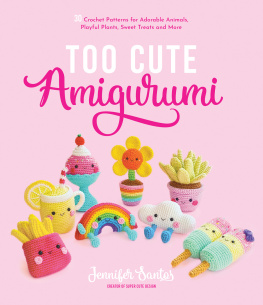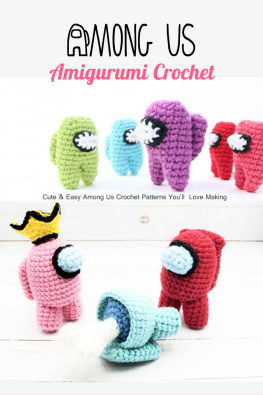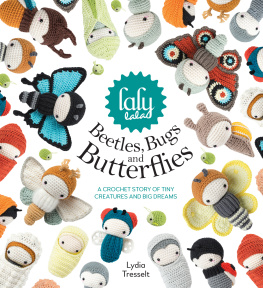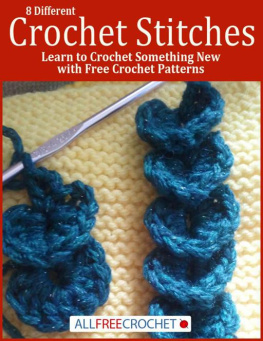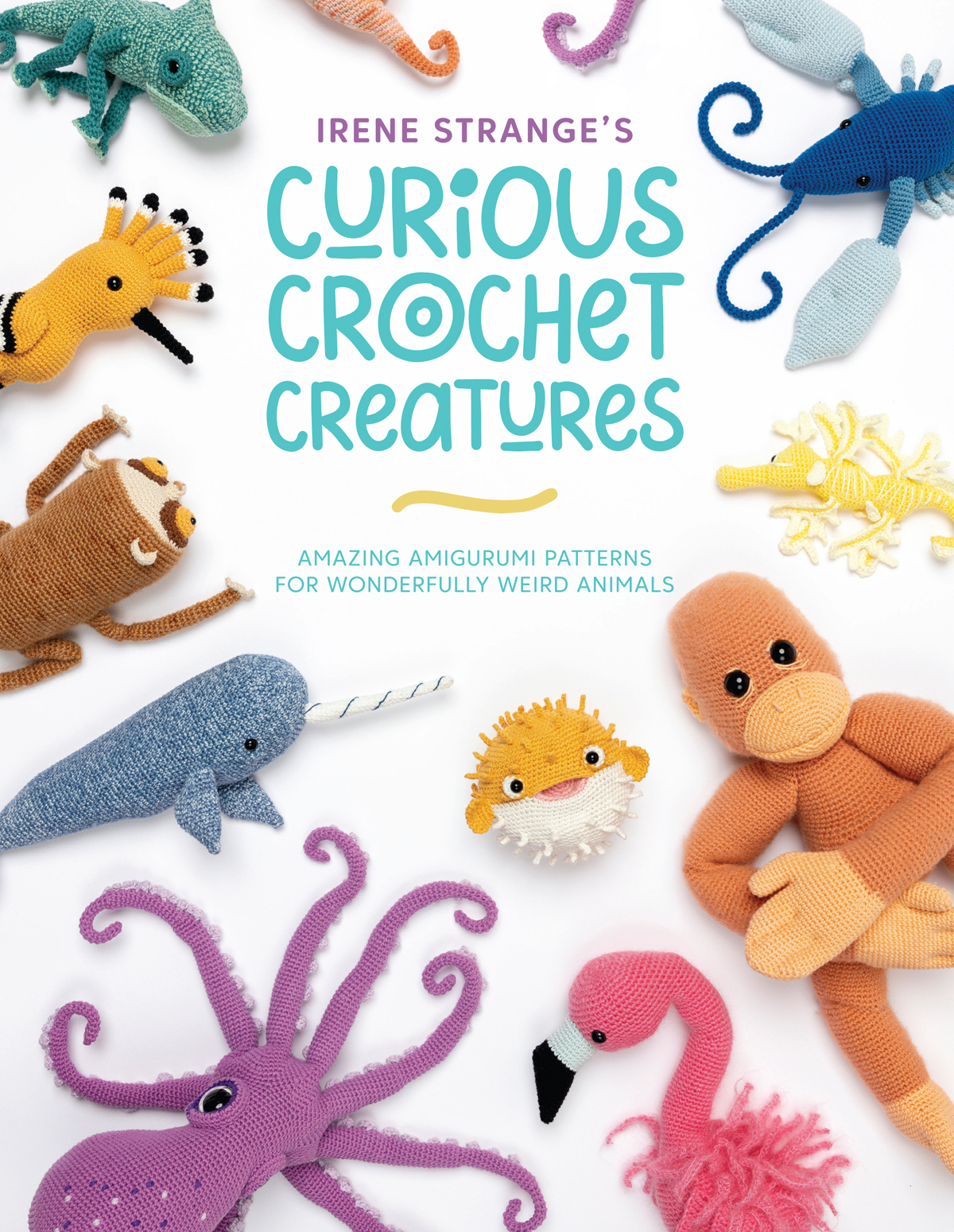Contents
Guide
Pagebreaks of the print version
IRENE STRANGES
CURIOUS CROCHET CREATURES
AMAZING AMIGURUMI PATTERNS FOR WONDERFULLY WEIRD ANIMALS
CONTENTS

INTRODUCTION
For as long as I can remember I have been fascinated by the natural world and all its inhabitants. The sheer diversity of life on our planet is mind-boggling, from the tiniest insect to the enormous ocean mammals. And since you, dear reader and maker, are holding this book full of crochet creatures, I bet you are an animal enthusiast, just like me!
I grew up in a very crafty household in the centre of Moscow. My grandma spun yarn, crocheted and sewed beautiful clothes for us and our dolls; my mum preferred to knit. There were plenty of craft books to look through and projects to try out. We didnt keep any pets, but we made up for it by taking in nature at every opportunity. We dived deep into the ocean with Jacques Cousteau to get a glimpse of the amazing underwater worlds, took hazelnuts to the red squirrels in the park and watched for the arrival of snow finches in the winter the wild things were everywhere if you knew where to look.
Sometime later, an interest in character design led me to discover crocheted toys, and Ive been recreating all sorts of creatures with yarn and hook ever since. I think crochet lends itself particularly well to working in three dimensions; it adds structure, and the smooth finish is pleasing to the eye. Since pretty much anything can be made in crochet, Im particularly drawn to making more unexpected animals they really dont get enough time in the spotlight compared to the more conventionally cute beasts.
In this book, you will meet 16 rather unusual creatures. You will create furry tummies, spiky backs, scaly tails and feathery necks. Some will have long dangly legs; some will have swirly tails. However curious and unusual, all the creatures you make will be adorably squishy and huggable.
So lets get crafting and get to know some of our more peculiar neighbours better through crochet.


HOW TO USE THIS BOOK
The projects in this book are as varied as the critters that inspired them. It is my hope that you will try something new in each construction process and pick up a trick or two along the way to add to your crochet toolkit. The patterns range in complexity from quick beginner makes to more involved projects sure to impress the family.
Throughout the book, youll be working in the amigurumi style, characterized by a smooth, all-over single crochet texture that is worked in a continuous spiral. When using this technique, adding stitches or taking them away can have a dramatic effect on the shape that is created. The projects build on this base of smooth texture and add different effects, either through combining yarns or through using textured stitches think spikes, popcorns and feathers. Combining different yarns and embellishments brings out the personality in the strangest things.
Use the patterns in this book to kick-start your own exploration of construction methods, colour combinations and textures!

How to read the patterns
When writing a pattern, I tend to think of the shape in terms of repeats: if a shape increases evenly, the repeats are made up of small sections separated into a (bracket) followed by the number of times these stitches fit into the round. It helps to count the stitches as you work to get into a rhythm the process can be very relaxing, and before you know it the shape will be complete!
Lets look at a typical start to an amigurumi project:

The total number of stitches in the [square] brackets changes between the rounds. This number tells you how many stitches were added or taken away.
Marking the first stitch of the round with a stitch marker and counting the stitches as you work can help you to keep track of where you are in the pattern. You could also use the starting tail to mark the first stitch by pulling it to the front of the work.
With practice its easy to read the crochet fabric to spot the single crochets (like little vs) or increases (more like ws) to find your place. Pretty soon you will be able to read the crochet stitches without any markers at all!
Pattern abbreviations
The following abbreviations have been used in this book:
= chain stitch
= double crochet
= single crochet decrease
= half double crochet
hdc2tog= half double crochet decrease 2 stitches into 1
= single crochet increase
inv dec= invisible decrease
inv sc3tog= put hook through front loops of first 2 stitches and under both loops of third stitch, pull 1 loop through, complete as sc.
= single crochet
sc3tog= single crochet decrease 3 stitches into 1
slst= slip stitch
st(s)= stitches
= treble crochet
Crochet terminology
The patterns are all written using US crochet terms. If you are used to working with UK terms, please note the following differences in stitch names:
US TERM | UK TERM |
|---|
Single crochet | Double crochet |
Half double crochet | Half treble crochet |
Double crochet | Treble crochet |
Treble crochet | Double treble crochet |
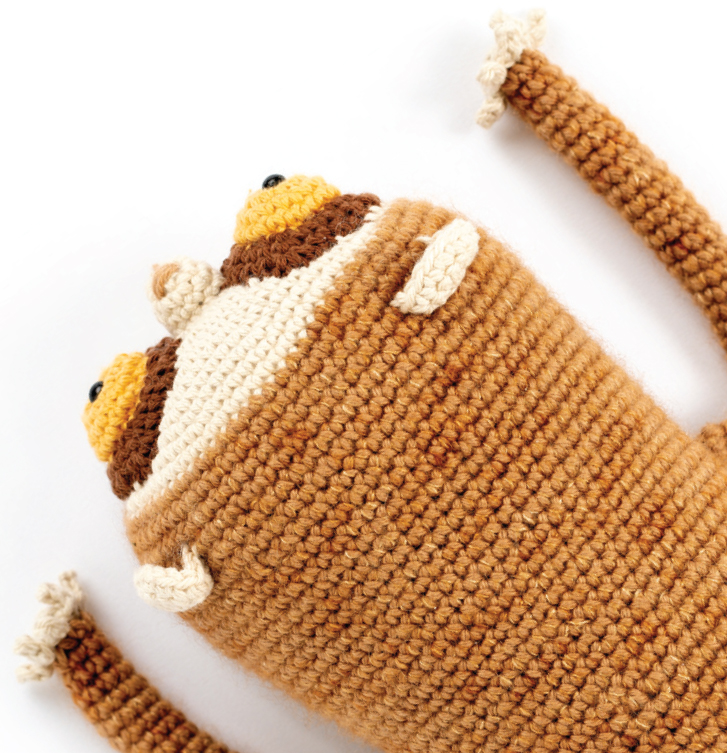
TOOLS AND MATERIALS
Yarn
The wonderful thing about amigurumi is that they can be made in any yarn! For the projects in this book, I have used yarn from Paintbox Yarns and Rico Designs, with the odd extra thrown in. At the start of each project you will find a list of the exact yarn used and the number of balls each sample took.
A thicker yarn will produce a bigger toy than the sample and will require more yarn. If your chosen yarn is thinner than the sample the result will be dinkier. When substituting yarns, I always compare the length and weight of the yarn ball to the one listed in the pattern if in doubt its best to have an extra ball or you might find yourself playing a game of yarn chicken!






